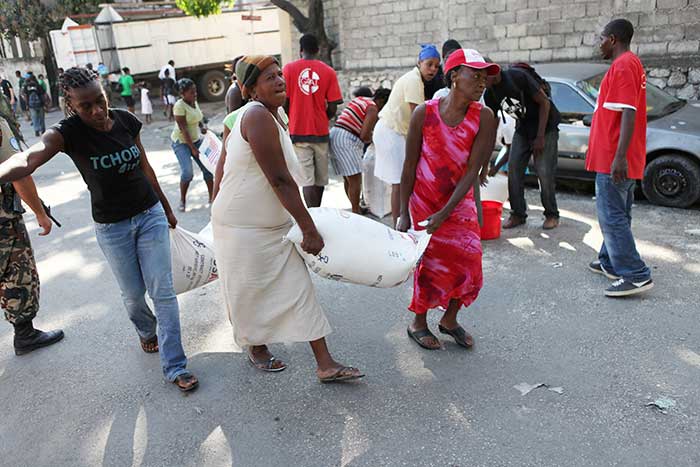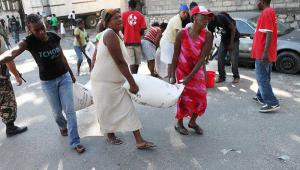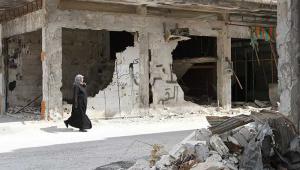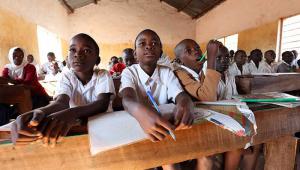p25-feature-usaid-haiti-istock_17024445_large.jpg

Haitians carry aid following the catastrophic earthquake in 2010.
The human cost of Matthew, the strongest storm to hit the region in nearly a decade, has also been substantial: nearly 900 people across the Caribbean and Florida are thought to have died.
In Haiti, a country still struggling to recover from a catastrophic earthquake in 2010, homes, businesses and infrastructure have been destroyed.
Research and consulting firm CoreLogic analysed the economic cost of damage to insured residential and commercial property, and puts it at $4-6bn.
That doesn’t include the cost of rebuilding damaged infrastructure, health care, crops or lost economic activity, for example.
In the wake of the Category Four storm, aid agencies have been appealing for funds and flocking to Haiti with hopes of supporting some 350,000 people in need of assistance.
According to the UN’s Office for the Coordination of Humanitarian Affairs, around 61,500 people have been evacuated to temporary shelters. Even before Matthew, 60,000 were still living in makeshift shelters following 2010’s earthquake, with poor access to water and sanitation.
Only 1 in 3 had access to proper latrines, and less than 3 in 5 to safe water. In rural areas that went down to 1 in 4 and 1 in 2 respectively.
That access has diminished further after the storm, which briefly reached Category Five status, with winds exceeding 157 mph.
The number of people arriving in hospital with cholera has sparked concerns the disease could rebound to levels seen in 2010, after it was first introduced by Nepalese United Nations peacekeepers sent in after the earthquake, which killed nearly 10,000 people over the next few years.
As well as cholera, Jean Cleaude Fignole, programme director of Oxfam in Haiti, said malnutrition cases could also rise over the long term, due to crop loss.
UNICEF, which has warned that almost half a million children have been affected in two Haitian provinces alone, has appealed for at least $5m.
“We are still far from having a full picture of the extent of the damage,” Marc Vincent, UNICEF representative in Haiti, said on Friday. “We are hoping for the best but bracing for the worst.”
The Haitian Red Cross has also appealed for around $6.8m.
The UN’s emergency fund, the CERF, loaned UNICEF $8m to help it scale up its response in Haiti. The World Food Programme has also already sent in 7.5 million pounds of food, and made a further 25 tons available for immediate distribution.
The US has also opted for in-kind aid, airlifting in more than 480 tons of relief aid, including hygiene kits, blankets and materials for shelters.
Meanwhile, the UK has committed £5m ($6.2m), which includes shelter kits, water purification equipment, solar power and the secondment of experts.
Both the IMF and the World Bank have also said they stand ready to support Haiti. The Caribbean Catastrophe Risk Insurance Facility, developed with the support of the World Bank, said at the weekend it is ready to pay over $20m to the small nation.
Following a series of storms in 2008, Faye, Gustave, Hanna and Ike, the country lost more than 14% of GDP.
According to Germanwatch Global Climate Index, Haiti ranks as the third country most affected by climate events.
In the aftermath of the 2010 earthquake, billions was sent to Haiti. But many argue much of that money was squandered and has done little for the population.
The most notorious case was centred on the American Red Cross. A joint investigation between investigative news organisation ProPublica and NPR found that, despite collecting nearly half a billion dollars to provide relief and build more than 700,000 new homes, it was accused of only building six.













